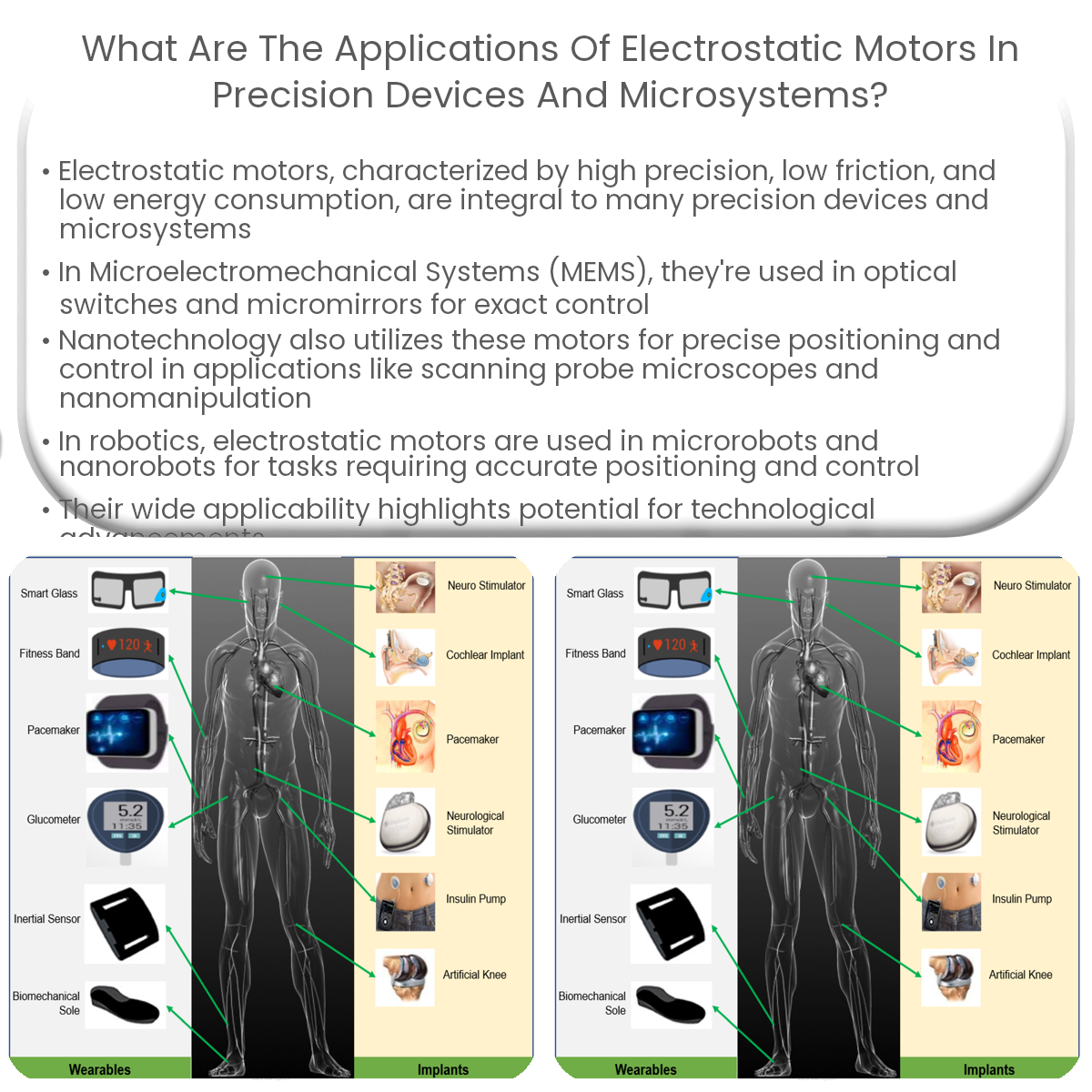Electrostatic motors are used in MEMS, nanotechnology, and robotics for precise control in optical switches, micromirrors, microscopes, and microrobots.
Applications of Electrostatic Motors in Precision Devices and Microsystems
Electrostatic motors, also known as electrostatic drives, utilize the forces generated by electrostatic charges to create motion. These motors offer several advantages, such as high precision, low friction, and low energy consumption, making them ideal for a variety of applications in precision devices and microsystems. This article will discuss some of the most common applications of electrostatic motors in these areas.
1. Microelectromechanical Systems (MEMS)
Electrostatic motors are widely used in MEMS, which are miniature devices that combine mechanical and electrical components on a single chip. Examples of MEMS that use electrostatic motors include:
- Optical switches: These are used in telecommunication networks to route optical signals, and electrostatic motors enable precise control of the switching elements.
- Micromirrors: Electrostatic motors can be used to control the position and orientation of micromirrors, which are essential components in devices like digital projectors and adaptive optics systems.
2. Nanotechnology
Electrostatic motors are also employed in nanotechnology, where they enable precise positioning and control at the nanoscale. Applications in this field include:
- Scanning probe microscopes: Electrostatic motors are used in atomic force microscopes (AFMs) and scanning tunneling microscopes (STMs) to control the movement of the probe tip with extreme precision.
- Nanomanipulation: Electrostatic motors can be used to move and position nanoparticles, nanowires, or other nanoscale objects for various applications, such as assembly or testing.
3. Robotics
Electrostatic motors have potential applications in the field of robotics, particularly in the design and development of microrobots and nanorobots. Their high precision and low energy consumption make them suitable for tasks requiring accurate positioning and control, such as:
- Microassembly: Electrostatic motors can be used in microrobots designed for assembling small components or devices with high precision.
- Biomedical applications: Nanorobots equipped with electrostatic motors can be used for targeted drug delivery, cell manipulation, or other medical procedures that require precise control at the microscopic scale.
Conclusion
Electrostatic motors play a crucial role in various precision devices and microsystems, offering numerous advantages such as high accuracy, low friction, and low power consumption. Their applications in MEMS, nanotechnology, and robotics demonstrate their potential for further advancements in technology and the development of innovative solutions in various fields.


